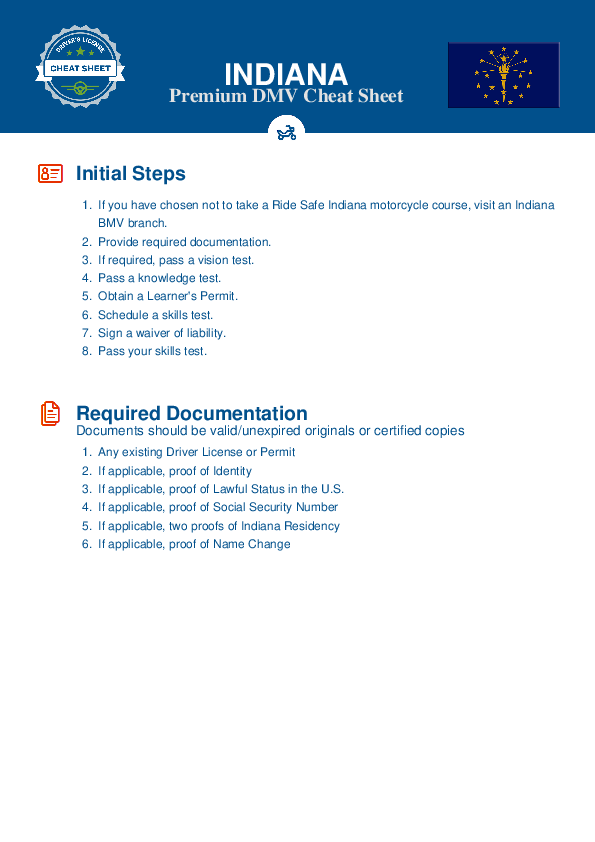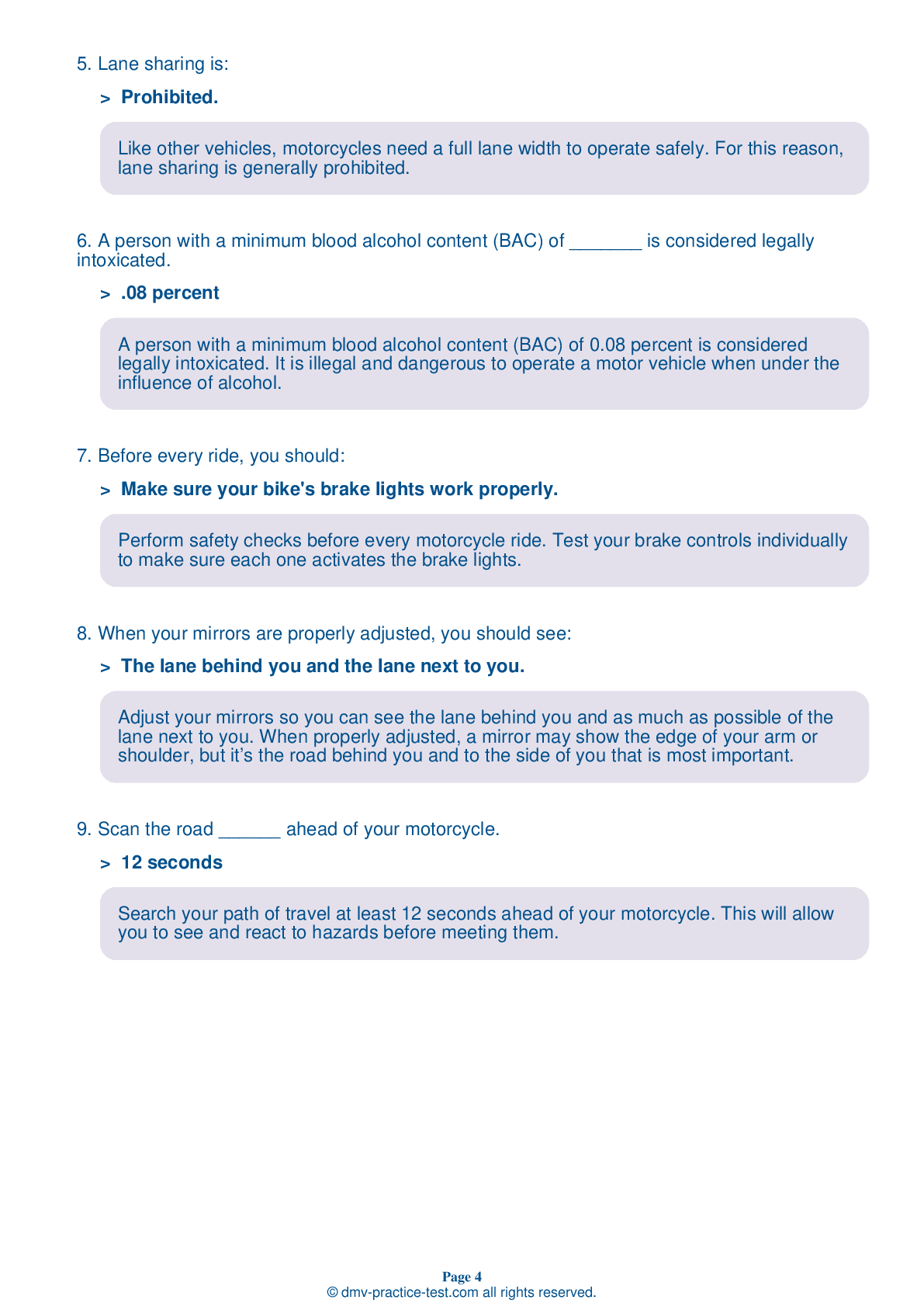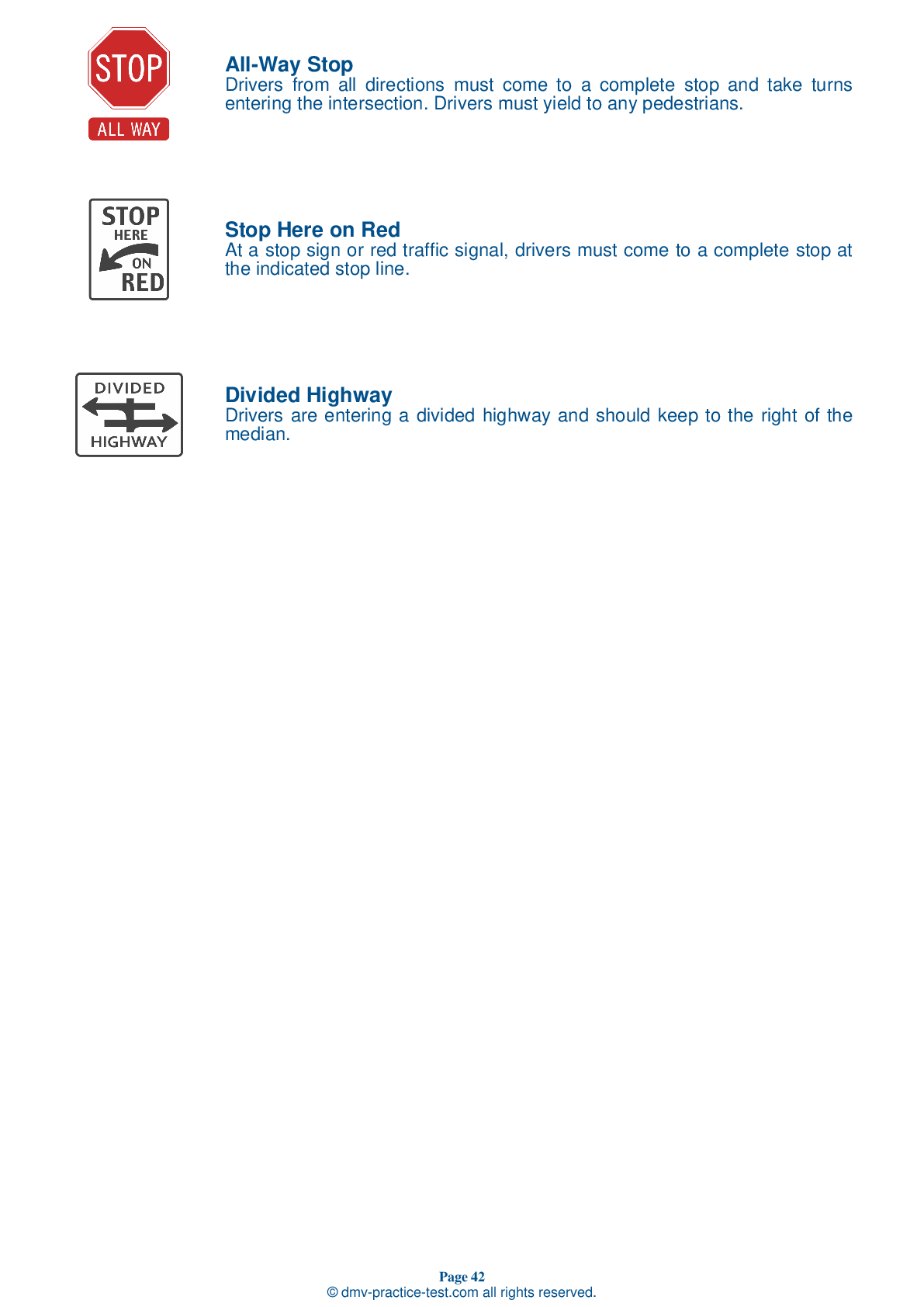Motorcycle Test | License IN 2025 | FREE Online Practice! #9 Page 4 of 4
Take this FREE motorcycle test (license in IN 2025) to check your knowledge of the road rules. To improve your results, download a motorcycle handbook online, study theory, and practice for free on our website. Still worried about how to get a motorcycle license in Indiana in 2025? Check our website for more sample tests, train as much as possible, and boost your grades!
19 . When a lead rider is extending their left arm and pointing downward, it means:
Hand signals are an important part of communication when riding in groups. When a lead rider is extending their left arm and pointing downward, it means there is a hazard in the roadway on their left side.
20 . Since most crashes happen during daylight hours, you should:
Most motorcycle crashes happen in broad daylight. You should always wear brightly-colored clothing when riding to maximize your chances of being seen, even during the day.
21 . While braking a motorcycle with a sidecar, you may need to:
A sidecar adds additional weight to one side of your motorcycle. You may need to steer slightly in the direction of the sidecar when applying your motorcycle's brakes if the sidecar is not also equipped with brakes.
22 . When a group of riders is passing another vehicle on a two-lane road, the riders should:
On a two-lane road, a group of motorcyclists should pass one at a time. Each motorcyclist should complete the pass before another begins to pass.
23 . Before riding, a motorcycle operator should check the clutch. A properly working clutch should feel:
Check your clutch and throttle before riding your motorcycle. The throttle should snap back when you let go and the clutch should feel tight and smooth.
24 . When going through a curve, you should:
Road and traffic conditions can change at any time. Always be prepared to change your lane position as appropriate no matter where you are on a roadway. The best path through a curve does not necessarily follow the curve of the road.
25 . When traveling in heavy traffic, maintain a minimum ______ following distance.
An expanded cushion of space is needed if your motorcycle will take longer than normal to stop. If the pavement is slippery, if you cannot see through the vehicle ahead of you, or if traffic is heavy and another driver may try to squeeze in front of you, open up to a minimum three-second following distance.
See the exact questions that will be on the 2025 Indiana DMV exam.
99.2% of people who use the cheat sheet pass the FIRST TIME
Jeneen was tired of paying $5/gallon. She got herself a scooter that required the motorcycle license. She studyed the motorcycle test cheat sheet and passed her test the next day!
Christopher tells us how he knew nothing prior to obtaining the motorcycle study guide, and he only got one question wrong because he clicked on the wrong answer by mistake.



